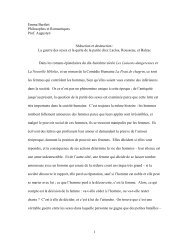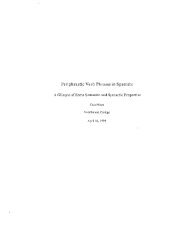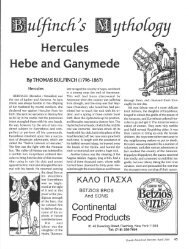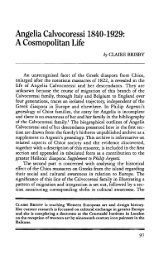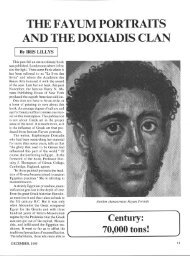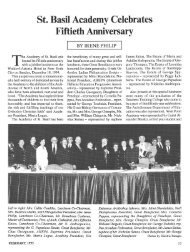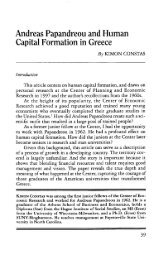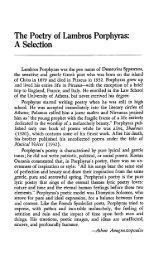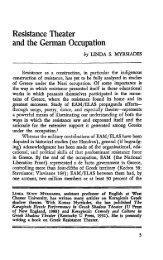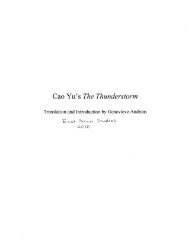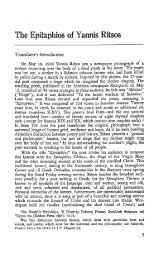Translating Neruda: Femininity and Sensuality ... - Triceratops Home
Translating Neruda: Femininity and Sensuality ... - Triceratops Home
Translating Neruda: Femininity and Sensuality ... - Triceratops Home
You also want an ePaper? Increase the reach of your titles
YUMPU automatically turns print PDFs into web optimized ePapers that Google loves.
Mueller 8<br />
The diversity of the translators’ backgrounds is reflected in their approaches to<br />
translating <strong>Neruda</strong>. In my readings I have observed widespread <strong>and</strong> varied use of<br />
domesticating strategies, as well as the occasional application of foreignizing techniques.<br />
Tarn seems to favor a more old-fashioned approach, choosing words that suggest an<br />
earlier moment in the history of spoken English than either the 1930s or the 1950s, when<br />
the original poems he translates were published, or the 1970s, when he was actually<br />
translating these poems. Krabbenhoft goes for specificity, choosing English words that<br />
are common <strong>and</strong> approachable but which don’t always carry the same meaning. Ossman<br />
<strong>and</strong> Hagen restructure the phrases of their translation as little as possible from Spanish,<br />
though sometimes at the cost of coherency or meaning in their text, foreignizing<br />
grammatically but domesticating in their attempts to clarify meaning. Felstiner <strong>and</strong><br />
Jacketti sometimes compromise literal equivalence in their translations for images that fit<br />
better with their overall rendering of the poem, which works better in some cases than<br />
others. Overall, the domesticating <strong>and</strong> foreignizing techniques seen in the poems I have<br />
selected function very differently, <strong>and</strong> are dependent on the broader nature of each<br />
translation. In the following pages, I explore the ways in which translators’ individual<br />
conception of <strong>Neruda</strong> informs their work, how their use of domestication shapes the<br />
reader’s underst<strong>and</strong>ing of <strong>Neruda</strong>, <strong>and</strong> how this underst<strong>and</strong>ing might differ from that<br />
which would develop from reading the poet only in his original language.



